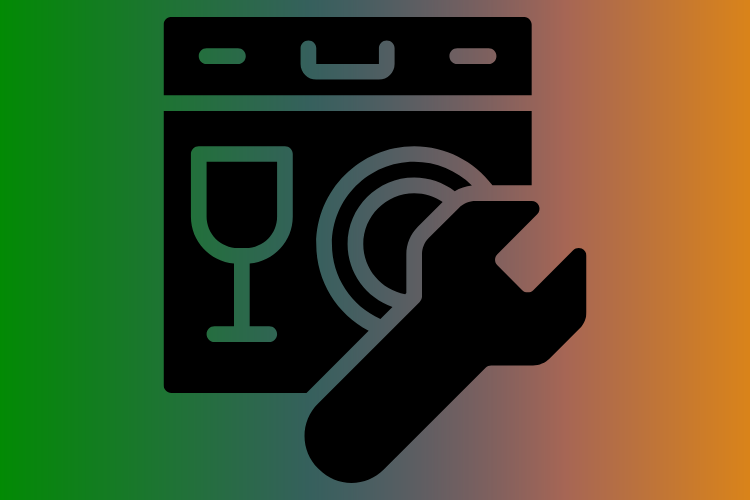How to Plumb in a Washing Machine or Dishwasher: Step-by-Step Guide
Installing a washing machine or dishwasher yourself can save money and is usually a straightforward job—provided the right plumbing connections are available. Whether you're replacing an old appliance or adding a new one, here’s how to get it plumbed in properly.
Tools & Materials You'll Need
-
Washing machine or dishwasher
-
Flexible inlet hose (comes with appliance)
-
Waste hose (attached to the appliance)
-
Washing machine tap (cold or hot as required)
-
Washing machine waste trap or standpipe
-
Jubilee clips (for securing hoses)
-
Adjustable spanner
-
Bucket or towel (for drips)
Step-by-Step Guide
Step 1: Turn Off the Water Supply
-
Locate the isolation valve on the cold water feed (and hot if required).
-
Turn it to the off position (a quarter turn for lever types).
-
If no isolation valve exists, turn off the mains water at the stopcock.
Step 2: Position the Appliance
-
Move the machine close to where it will sit.
-
Ensure the floor is level and firm.
-
Leave enough room at the back for hoses to connect without bending or kinking.
Step 3: Connect the Inlet Hose(s)
-
Screw one end of the inlet hose to the water inlet tap (usually blue for cold, red for hot).
-
Screw the other end onto the back of the machine.
-
Use a spanner to tighten gently—do not overtighten.
-
If needed, use PTFE tape to ensure a watertight seal.
Washing machines often require cold only. Dishwashers usually require cold but some older models need hot.
Step 4: Connect the Waste Hose
-
Attach the waste hose to either:
-
A standpipe (with a trap), or
-
A spigot on the sink waste trap (cut off the blanking cap first if unused)
-
-
Secure the hose with a jubilee clip to prevent leaks.
-
Ensure the hose loops upward before going down (prevents backflow).
Step 5: Turn the Water Supply Back On
-
Slowly open the isolation valve or stopcock.
-
Check all joints and connections for leaks.
Step 6: Plug In and Test
-
Plug the appliance into a 13A socket, not an extension lead.
-
Run a short cycle to check water fills, drains, and there are no leaks.
-
Push the machine fully into place, making sure not to trap the hoses.
✅ Done!
10 Frequently Asked Questions About Plumbing in a Washing Machine or Dishwasher
1. Can I plumb a washing machine into a kitchen sink waste?
Yes, you can use a washing machine trap with a spigot. Just ensure the spigot is open (cut the blanking cap if unused) and secure the hose tightly.
2. Do washing machines in the UK use hot and cold water feeds?
Modern UK washing machines typically use cold feed only, as they heat water internally. Older machines may require both.
3. How high should a washing machine waste pipe be?
The standpipe or waste entry point should be at least 600mm and no more than 1000mm high to prevent siphoning and ensure proper drainage.
4. What size pipe is used for a washing machine waste?
A 40mm diameter pipe is standard for washing machine or dishwasher waste in the UK.
5. Can I use the same water supply for a washing machine and dishwasher?
Yes, using a Y-connector or dual appliance valve allows two machines to share a cold feed.
6. Do I need a plumber to install a washing machine?
Not usually—if the plumbing is already in place, it's a simple DIY job. If new pipework is needed, call a qualified plumber.
7. Why is my washing machine not filling with water?
Check:
-
The tap is open
-
The inlet hose isn’t kinked
-
The filter inside the hose or machine inlet isn’t blocked
8. Can I plumb a washing machine upstairs or in a garage?
Yes, but ensure proper waste drainage and freezing protection in cold spaces like garages.
9. What should I do if the waste hose leaks?
Check the:
-
Connection is secure
-
Hose isn’t damaged or worn
-
Clip or jubilee fitting is tight
Replace the hose if necessary.
10. Do dishwashers and washing machines use the same plumbing fittings?
Generally, yes. Both use:
-
¾” BSP fittings for inlet hoses
-
Standard 40mm waste pipes with spigots or standpipes
Printable Checklist: Plumbing in a Washing Machine
Here’s a simple, printable checklist to follow when installing a washing machine:
🔲 Turn off water supply (isolation valve or mains stopcock)
🔲 Position appliance with access to connections
🔲 Connect inlet hose to appliance and water tap
🔲 Attach waste hose to standpipe or sink trap spigot
🔲 Use jubilee clip to secure waste hose
🔲 Open water supply and check for leaks
🔲 Plug in appliance to mains socket (not an extension lead)
🔲 Run short cycle to test fill and drain functions
🔲 Check for leaks at all connections
🔲 Push appliance into final position without trapping hoses
